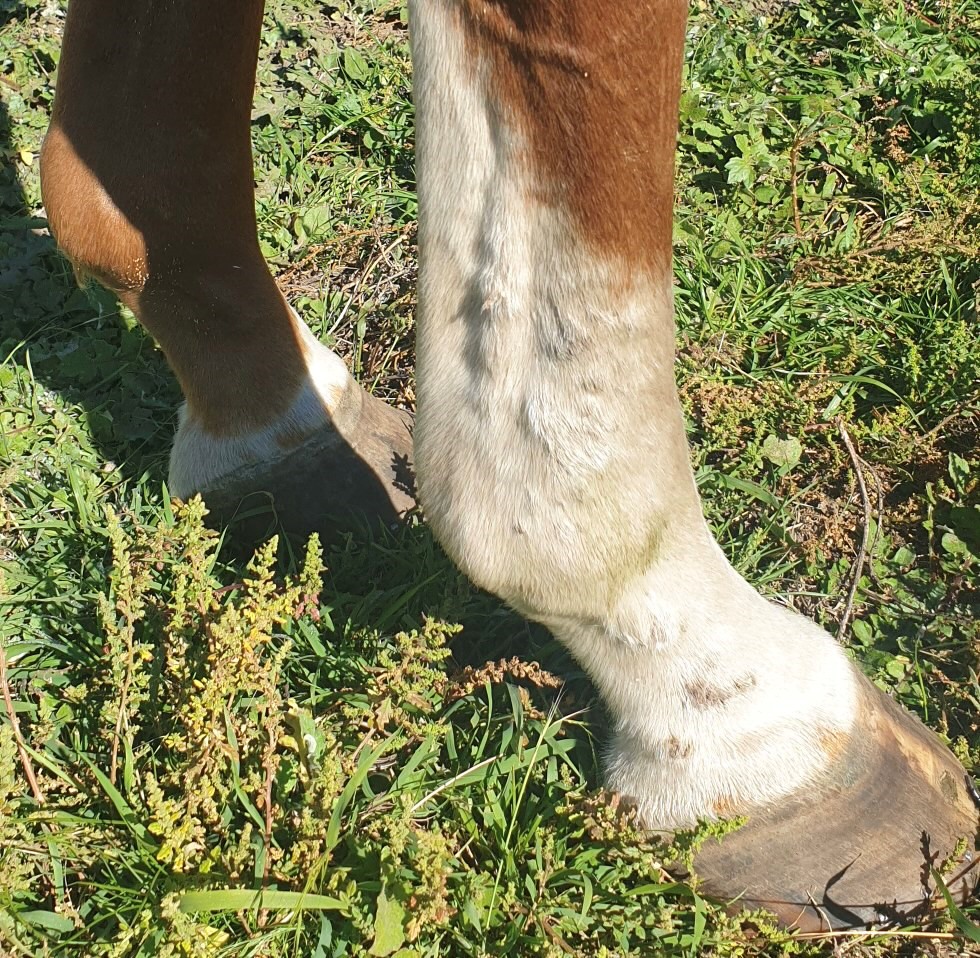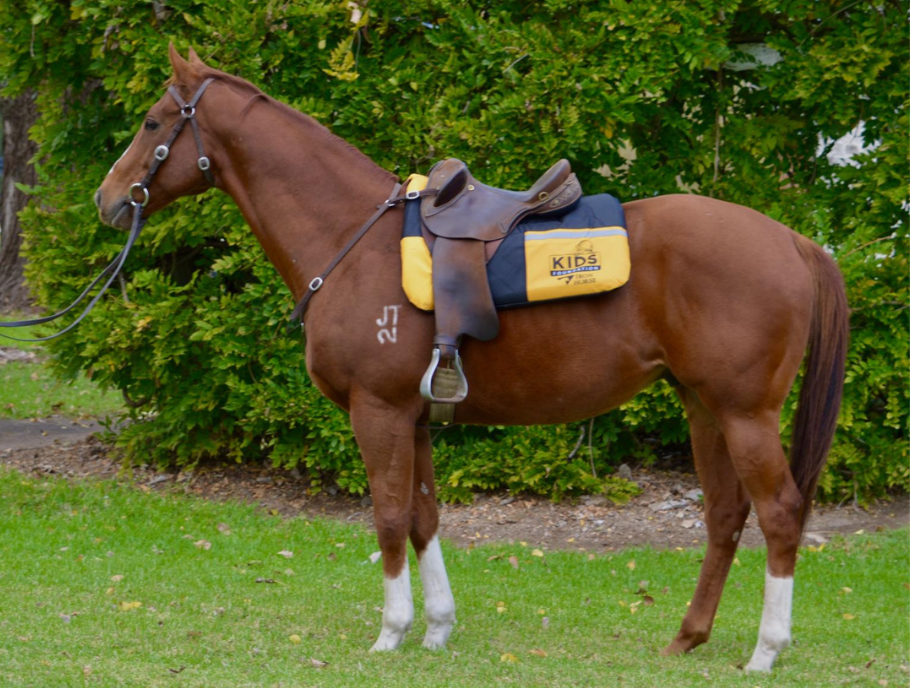
Give Greasy Heel The Slip
By Dr Carly Garling
Greasy heel or pastern dermatitis are terms used for a collection of conditions that affect the skin of the pastern in a horse. Bacteria, fungi, parasites, sun exposure or allergies can cause this condition that presents as scabs, crusting or ulcers with various distributions on the pastern, but most commonly in white legs on the back of the pastern.
It is important to gain control of this condition, as it can be painful and quickly progress to whole limb involvement (cellulitis).
To get on top of Greasy Heel, you need to understand why your horse is suffering so you can treat the condition now and place management practices to prevent this from happening again.

Common Causes
Physical factors include insect bites as well as chronic exposure to mud/wet grass which will lead to traumatised macerated skin.
Horses with poor immunity may not be able to fight off skin infections as well as other horses can. Poor immunity may be from Pars Pituitary Intermedia Dysfunction (Cushings), malnourishment or parasite infection.
If you notice your horse has irritation wounds or scabbing on all four pasterns, it could be because they are suffering from contact allergies from plants in the paddock, or the type of bedding in the stable.
Exposure to the sun will only occur in areas with white markings (unpigmented skin) most commonly on the outside of the leg. You will notice hair loss and scabbing. This can also be caused by liver disease or ingesting a photosensitizing agent such as Saint John’s Wart, Clover, or Perennial Rye Grass.
Once the skin is compromised by one of the above processes, opportunistic bacteria, mostly Dermatophilus Congolensis or Staphylococcus Aureus, will cause a secondary infection. Therefore, we need to treat the infection as well as control the underlying cause so that it does not recur.
Management
- Keep your horse in a clean dry stable during wet weather or rope off boggy/muddy areas in paddocks.
- Use a good insecticide on your horse to minimize exposure to insect bites.
- Walk around your horse’s paddocks and make sure there aren’t any noxious weeds.
- If you suspect a contact allergy, source a different bedding material for the stable (treated wood shavings may contain chemicals that will cause hypersensitivity).
- If your horse suffers from UV exposure, place bandages on their legs or stable them.
Treating An Active Infection
- If the wounds are severe or you are concerned about a more complicated disease process occurring, you should consult your veterinarian. They can perform further testing or place your horse on a long course of antibiotics for the skin wounds.
- If dry hard scabs are present, they will most likely be painful to remove therefore soak with conditioner overnight to soften them. It is very important to remove these scabs for treatment as this is where most of the bacteria reside.
- If your horse has heavy feathers or has wounds/scabbing over the back of the fetlock, clip away these hairs to decrease moisture retention.
- Wash the area with a chlorhexidine shampoo (antibacterial wash from your vet) and leave it on for 10-15mins to allow for sufficient contact time to kill bacteria.
- Dry area well but gently with a towel
- Rub an antibacterial cream onto the clean and dry affected area. Examples of creams to use include Flamazine & White Healer.
- Repeat the last three steps daily for seven days and then two-three times weekly up until one week following resolution.
Latest Horses
Team Thoroughbred Newsletter
Subscribe to Redzel’s Roundup, the Team Thoroughbred e-newsletter, and be the first to know about our special events and activities, receive important information from our equine welfare veterinarians, read good news stories, go into the draw for Team Thoroughbred giveaways and most importantly be part of a passionate community of Thoroughbred lovers!


